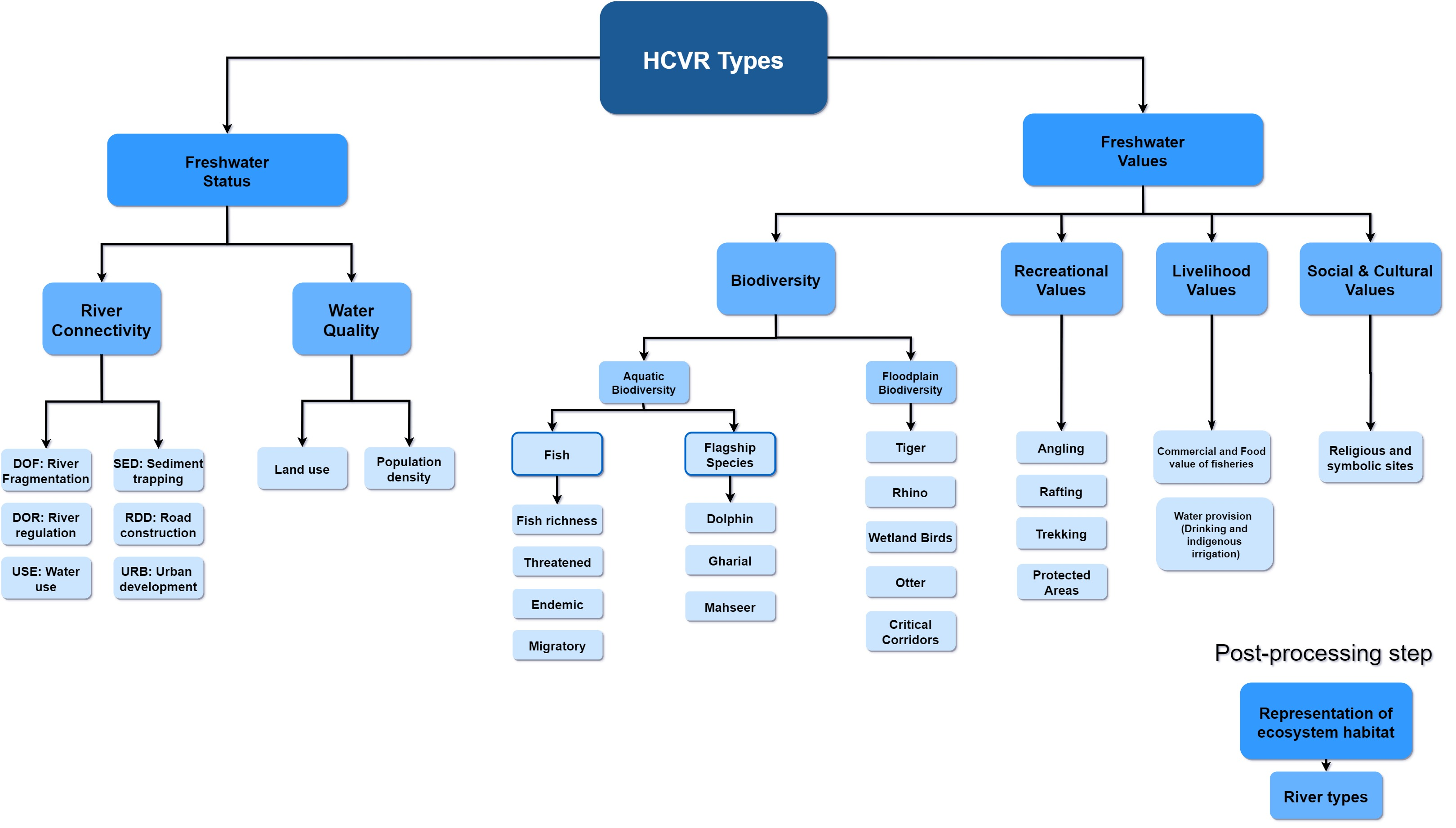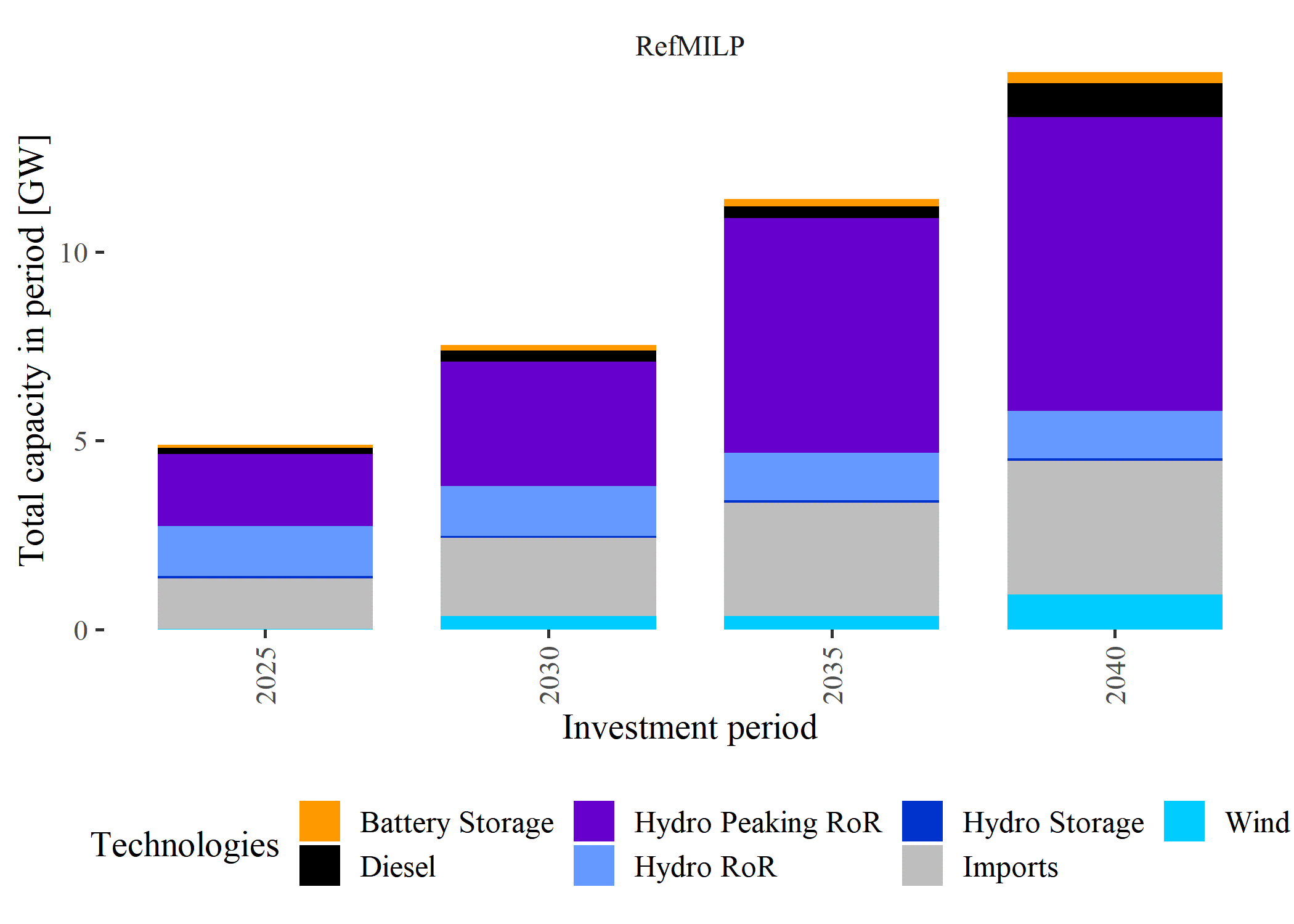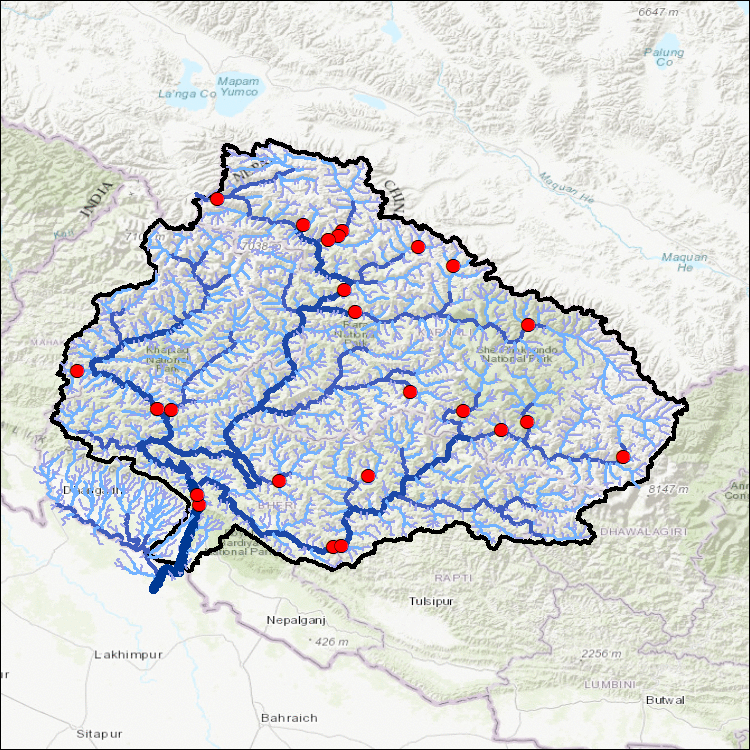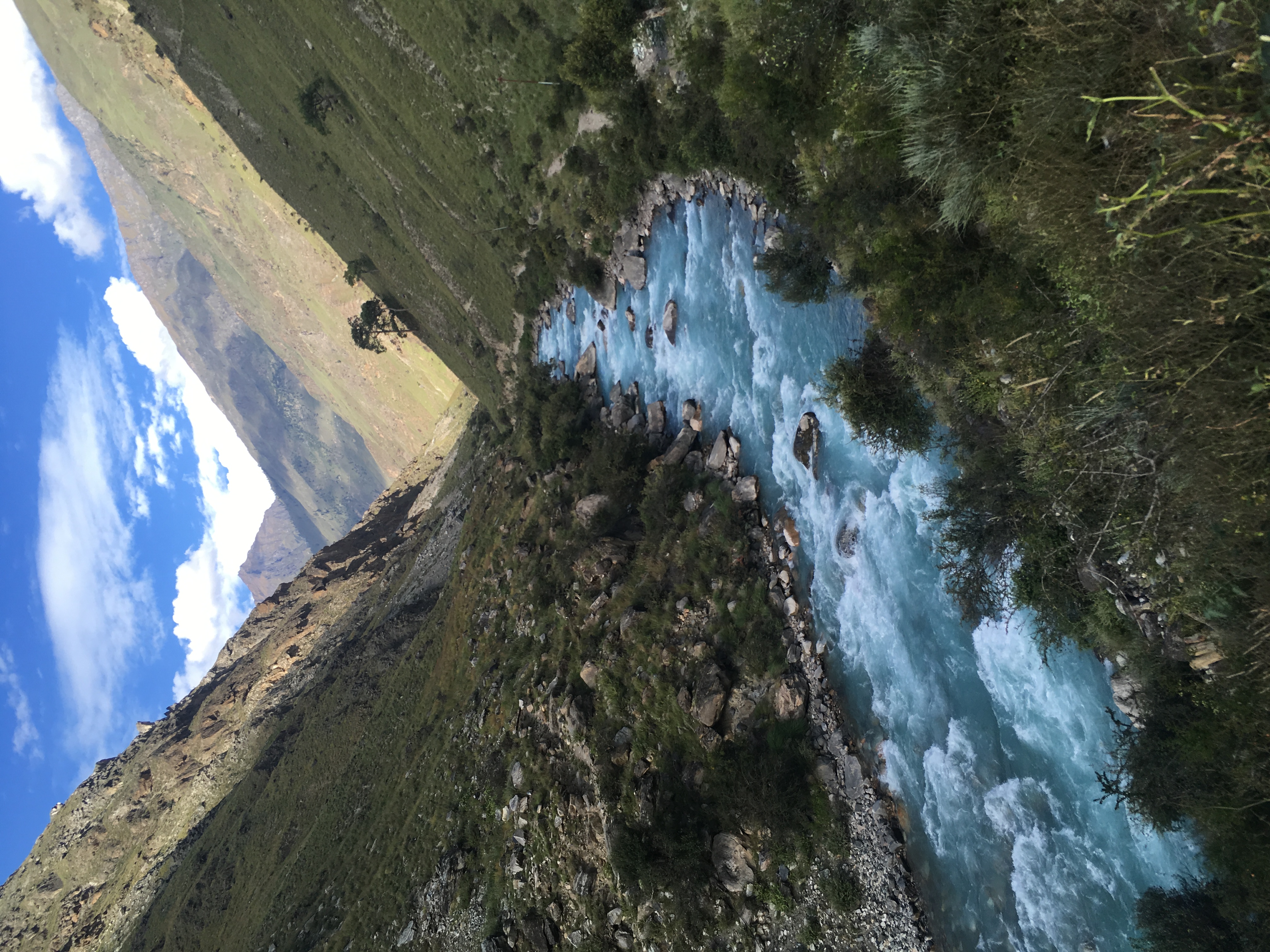About Paani Program
The Paani program, funded through USAID, is a five-year program (2015-2020) working to enhance Nepal's ability to manage water resources through an integrated, basin approach, focused on climate change adaptation and conservation of freshwater biodiversity.
System Scale Planning Project
The System Scale Planning Project (SSPP) supports sustainable energy systems and conservation of freshwater resources for people and nature in Nepal.
As a part of the Paani program, WWF-Nepal led a study with partners including WWF US, The Nature Conservancy, McGill University, University of California, Berkley, and Stanford University titled “System scale planning to support sustainable energy systems and conservation of freshwater resources for people and nature” (also known as SSP project).
Project Components
There are three major components of this project, focused on different scales and sectors but intended to inform each other:
- The identification of High Conservation Value Rivers (HCVR) in Nepal;
- An Energy Options Assessment (EOA) for development of the national power system; and
- System Scale Planning (SSP) for optimized hydropower planning for the Karnali river basin.
Together the three components are intended to increase the transparency of information on resources and options and to inform decision-making in Nepal on energy development and river conservation.
More DetailsThe Project Components
The HCVR assessment combines information on freshwater values (ecosystem services) and freshwater status (river health) to find important rivers in Nepal for conservation.
More DetailsThe Energy Options Assessment (EOA) for Nepal produced a plan for least-cost development of the power system of Nepal over the next 20 years
More DetailsThe System Scale Planning (SSP) component explored the tradeoffs associated with hydropower development in the Karnali river basin and nationally.
More DetailsHigh Conservation Value Rivers (HCVR)

High Conservation Value Rivers (HCVR)
The HCVR assessment combines information on freshwater values (ecosystem services)
and freshwater status (river health) to find important rivers in Nepal for
conservation purposes. A volunteer Advisory Group composed of Nepali
experts across multiple disciplines played a crucial role in supporting the
process with provision of data, knowledge and guidance on methodology development.
Important freshwater
values were identified during consultative meetings with the Advisory Group. A team of local
and international hydrology and geographic information system (GIS) experts conducted
in-depth data collection and GIS mapping
which resulted in more than 20 layers of novel data. These data layers
represent freshwater values including those related to aquatic and floodplain-related
biodiversity, recreation, livelihoods, and the
social-cultural uses of rivers (see diagram above).
Identification of HCVRs is of
utmost importance in integrated basin planning on multiple scales. HCVRs provide a
quantitative evaluation and spatial mapping of
some of the important “hidden values” that rivers provide to society, allowing these to be
better included in decisions related to a basin’s sustainable utilization and development.
Understanding where areas of high conservation
value - i.e., those that support biodiversity, recreational, fisheries, or other
socio-cultural values - occur within the basin allows for more scientifically grounded
negotiations regarding trade-offs with development.
Natural resources and protected area managers and others involved with conservation
and restoration efforts also benefit from the identification of freshwater
conservation priorities, which help guide decisions on
where to focus their work and limited resources.
Energy Options Assessment (EOA)

Energy Options Assessment (EOA)
The Energy Options Assessment (EOA) for Nepal produced a plan for least-cost development of
the power system of Nepal over the next 20 years, which allows the comparison of system cost
implications of different policy options and other assumptions. These
include different costs or incentives for technologies (e.g., solar PV, wind, storage),
different demand forecasts, and policy prescriptions and targets.
The model provides
insights
into potential investments in generation, storage and transmission capacity and operations.
Such portfolio-based scenario analysis has not yet been explored for Nepal, since previous
planning studies focused on a single
pathway with little sensitivity analyses. With the dramatically falling costs of wind, solar
PV, and storage globally, the results of this model provide valuable information for
long-term energy planning for Nepal, including
dependence on hydropower which can then be explored within the system planning, for the
Karnali basin and nationwide.
System Scale Planning for Hydropower (SSP)

System Scale Planning for Hydropower (SSP)
The System Scale Planning (SSP) component explored the tradeoffs associated with hydropower
development. A very high number of development options (different combinations of projects)
can be compared in terms of their performance across a range of quantitative
criteria (economic, social and environmental). The tradeoffs are clearly visualized through
a series of parallel plots and other graphics. The purpose of the model is to evaluate
investment options (defined in terms of
location, design and operation) that perform well across a range of economic, social and
environmental objectives. It can be used to identify options for planning purposes, or to
calculate and compare the cumulative impacts
of pre-defined combinations of projects. Some of the inputs to this model come from the HCVR
analysis, while the EOA analysis provides the overall required scale of hydropower.
There
are many possible future hydropower development options in the Karnali River basin given the
candidate hydropower projects that are now in the planning stages. SSP assesses
different combinations of these potential
projects, or solutions, and evaluates each one across multiple environmental, social and
technical criteria. This quantitative process can help identify development solutions
that minimize hydropower’s cumulative
impacts and illustrates tradeoffs that are inherent in hydropower development.
Explore the High-Conservation Rivers of Nepal
We produced more than 25 novel data layers related to river connectivity, water quality pressures, river classifications, and freshwater values. The results can be explored in our interactive website below.
Our Team and Advisory Group
Our Team
“System scale planning to support sustainable energy systems and conservation of freshwater resources for people and nature” project has been conducted in leadership of WWF with support of USAID Panni Program. Following officials have been involved in this project:

Advisory Group
Under High Conservation Value Rivers assessment, an advisory group have formed to guide and help in data collection on environment, recreational, livelihood and socio-cultural values of Nepalese river. Following experts were present in this group.







